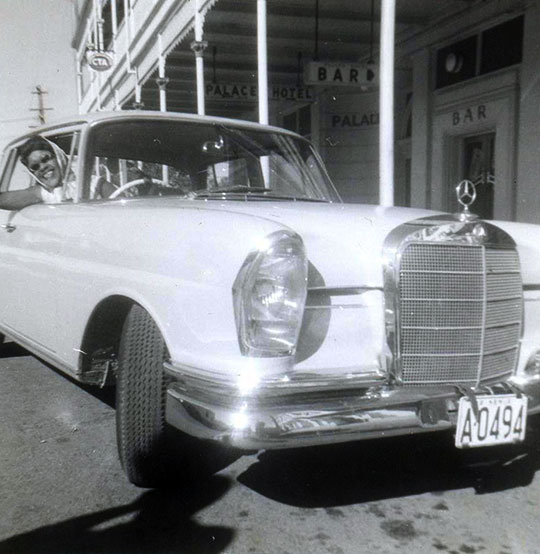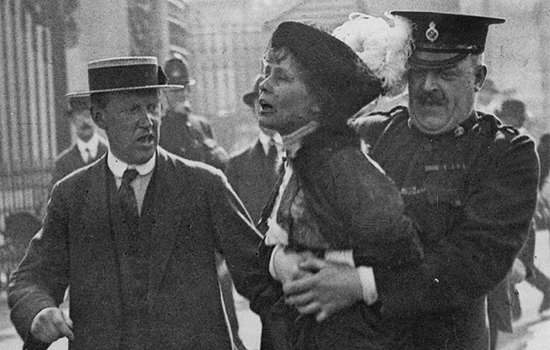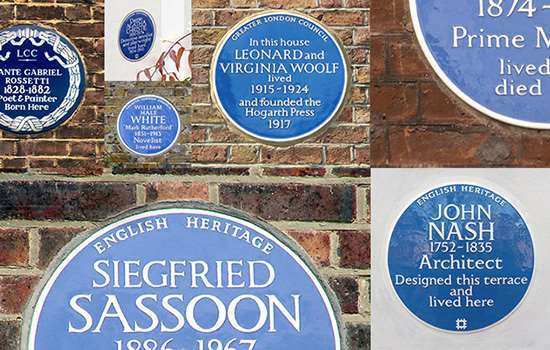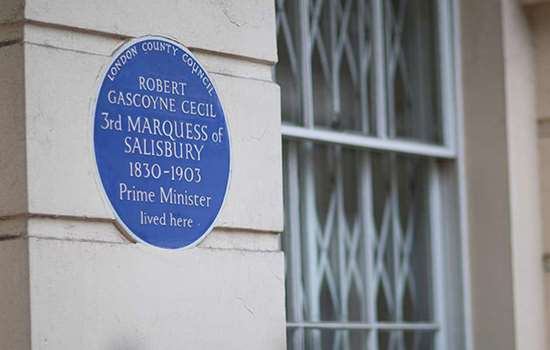ATWELL, Winifred (d.1983)
Plaque erected in 2025 by English Heritage at 18 Bourdon Street, Mayfair, W1K 3PJ, City of Westminster
All images © English Heritage
Profession
Pianist and Entrepreneur
Category
Commerce and Business, Industry and Invention, Music and Dance
Inscription
WINIFRED ATWELL d.1983 Pianist, entertainer and entrepreneur lived here
Material
Ceramic
Winifred Atwell was the first Black artist in the UK to sell a million records and to have a number one single. Her salon and products for Black women have been recognised as innovative and empowering. Atwell is commemorated by a blue plaque at 18 Bourdon Street, Mayfair, her former home.
Winifred Atwell was born in Tunapuna, in Trinidad. Her birthday is usually given as 27 April; her year of birth was between 1909 and 1915; this uncertainty means that only her date of death is stated on the plaque. She was the only child of a district nurse and a chemist and though she worked in the family shop and did a degree in pharmacy at her father’s insistence, music was always her main priority.
From the age of four, Atwell played the piano. She performed at charity concerts throughout her young life and in the early 1940s went to New York to study piano technique. In August 1945 she sailed first-class from New York to London. When she arrived, she gave her occupation as ‘chemist’, but her aim was to be a concert pianist. Atwell soon built a reputation. She played classical piano on at least two episodes of the BBC radio programme Calling the West Indies, produced by Una Marson, in 1945.
By 1947 Atwell had developed her characteristic style of beginning a performance with classical pieces before moving on to rollicking ragtime. She had a strong radio presence and featured twice on BBC TV’s new variety show, Stars in Your Eyes. For her revue at Belfast Empire, she was billed as ‘Radio’s most versatile pianist. From Bach to Boogie’.
In June 1947 Atwell married Reginald (Lev) Levisohn, a variety artiste who gave up his stage career to become her manager. She developed her signature move, where she crossed the stage from her concert grand to her ‘other piano’ – a battered old upright, kept deliberately out of tune. This ‘pi-anna’ developed its own mythology, travelling with Atwell for her performances.
Parties and the Philharmonic
Atwell first hit the big time in 1948, playing in a charity concert at the London Casino, where she wowed the audience with her ragtime music. Theatre impresario Bernard Delfont offered her a contract and soon afterward she signed with Decca.
In 1952 Atwell appeared, to great applause, in the first Royal Variety Performance for the new queen, Elizabeth II, closing the act with her ‘Britannia Rag’, composed specially for the occasion, which rose to number five in the pop charts. She had another hit with ‘Let’s Have a Party’ in 1953. In 1954, she became the first Black recording artist to reach number one with ‘Let’s Have Another Party’. Between 1952 and 1960 Atwell had eleven songs reach the top ten in the charts and at the end of the 20th century was the most successful female instrumentalist ever to have featured in them. In the 1970s her Black and White Rag became famous again as the theme of the BBC snooker programme, Pot Black.
Atwell was most popular for her ragtime, but she continued to play classical music and in 1954 her recording of Rachmaninoff’s ‘Rhapsody on a Theme of Paganini, Variation 18’, reached number nine in the pop charts. In November 1954 Atwell and the London Philharmonic Orchestra played Grieg’s ‘Piano Concerto’ and George Gershwin’s ‘Rhapsody in Blue’ at the Royal Albert Hall.
Entrepreneurship
Atwell was also an entrepreneur. She ran music publishing company Una Productions Ltd, which sold sheet music, and she wrote piano training books and established the Winifred Atwell scholarship at Ivor Mairants’ Central School of Dance Music in London.
Atwell used her wide-ranging skills to build businesses addressing the woeful lack of services and products catering to Black women in London. In 1957 she opened the stylish Winifred Atwell Salon in Brixton, one of the earliest salons in the country to specifically serve Black women’s hair needs. She developed a related brand in 1958 which manufactured and sold products including Stay Straight for hair, which Atwell was reported to have utilized her chemist-expertise to formulate, and make-up for Black skin tones. These empowering initiatives reflected her personal understanding of the importance of appearance for professional Black women: for Desert Island Discs, she had chosen a comb as her luxury item.

Bourdon Street
From the late 1950s, Atwell co-owned 18 Bourdon Street through a business, and by October 1962, this red brick building with picturesque Queen Anne detailing – built as stables with accommodation above in about 1900 – was her home address. The street was also home to the avant-garde Aeolian Hall and Grosvenor Gallery, then home to BBC offices and concert spaces. Atwell lived there for around a decade.
The public recognised Atwell for her stunning gap-toothed smile, her glamorous gowns, her furs and jewellery, her white poodle and her big white Jaguar Mark 7 with its personalised number plate. She appeared in more than a hundred BBC radio shows and dozens of TV programmes. In 1952 she had her own Radio Luxembourg show. Her TV series, Bernard Delfont Presents the Winifred Atwell Show, ran for ten episodes on the new ITV network in 1956 before transferring to the BBC the following year. Her hands were insured for £40,000 and her fan club had more than 50,000 members. She was awarded Trinidad and Tobago’s Gold Hummingbird Medal for her achievements in music.
Atwell performed regularly overseas, especially in Australia, where she recorded her own TV series in the early 1960s. She and Lev spent increasing time there and relocated to a town just outside Sydney in about 1970. Atwell was allowed residency despite the ‘White Australia policy’ because of her celebrity status. Her last public performance was in Australia in 1981, the same year in which – thanks to a change in the law – she was finally able to become an Australian citizen. Atwell died on 28 February 1983 and was buried with Lev in a grave marked by a headstone shaped like a piano.
Further reading
-
Stephen Bourne, ‘Atwell, (Una) Winifred (c.1913–1983)’, Oxford Dictionary of National Biography (2004) (access with a UK public library card)


